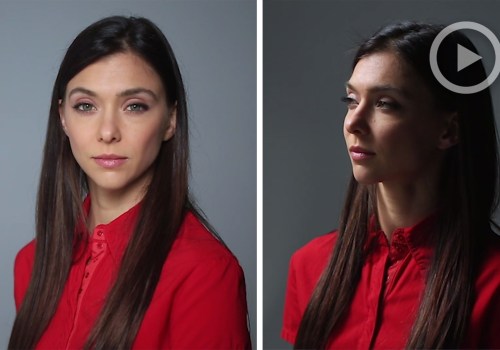When creating contracts or terms of service for a photography business, it is important to make sure that model releases and usage rights are included. Model releases are documents that photographers and videographers use to obtain permission from their subjects or models to use their images for commercial purposes. Usage rights are the rights given to the photographer or videographer by the model which detail how the images can be used. These two items are essential for protecting the photographer or videographer from any potential legal issues that may arise from using images without the proper permission. Including model releases and usage rights in contracts can help photographers and videographers protect their work and ensure that any images they use are done so legally.
In this article, we will explore what model releases and usage rights are, why they should be included in contracts, and how to go about doing so. It is essential for photographers to include model releases and usage rights in their contracts in order to protect their work and their clients’ rights. The digital age has made it easier for people to access and use images without permission or payment, so photographers must be more diligent in protecting their work. In order to do this, photographers need to understand the legalities surrounding model releases and usage rights. When it comes to usage rights, there are two main types: exclusive and non-exclusive rights. Exclusive rights mean that the photographer grants the client exclusive use of the image, meaning no one else can use the image, and the client pays a higher fee for the image.
Non-exclusive rights mean that the photographer grants the client permission to use the image but does not grant exclusive rights, and the client pays a lower fee for the image. Copyright is also an important factor to consider when it comes to photography. Copyright is a form of intellectual property that grants the photographer exclusive rights to reproduce, distribute, and make derivative works from their images. Understanding copyright is essential for photographers, as it helps protect their work from being used without their permission or payment. A model release is a legal document that grants permission for a photographer to use an image of a person in a commercial way, such as advertising or selling products. It is important for photographers to get a model release from any people they photograph, as this will protect them from any potential legal issues down the line.
Model releases should include information such as the model’s name, address, phone number, email address, and any other relevant information. When it comes to determining usage fees, there are several factors to consider. One is the type of usage – different usages (such as advertising, editorial use, or personal use) can command different fees. The size of the image being used can also play a role in determining usage fees. Another factor is how long the usage will be – longer usages can command higher fees. It’s important for photographers to understand the importance of including model releases and usage rights in their contracts.
By understanding the different types of usage rights and how copyright works, photographers can make sure they are protecting their work and their clients’ rights. By understanding how to determine usage fees and including model releases in their contracts, photographers can make sure they are getting paid for their work.
Understanding Copyright
Copyright law is an important issue for photographers to understand. Copyright protects the creator of an image by giving them exclusive rights to reproduce, distribute, and display their work. Photographers must ensure they understand their rights and the rights of their clients when it comes to copyright. Copyright law states that the photographer is the copyright owner of the image, giving them exclusive rights to display, reproduce, and distribute their work.This means that any use of the photograph without permission from the photographer is considered copyright infringement. If a photographer sells or gives away copies of their image, they are still the copyright holder and are entitled to a portion of any profits made from its use. Photographers can also assign copyright to another party in order to protect their work. This is often done through a contract that outlines the terms of use for the photograph. It is important for photographers to understand the specific terms and conditions of each contract they sign in order to ensure that they are protecting their rights.
Photographers should also be aware that some clients may be willing to negotiate the terms of a copyright agreement. It is important for photographers to be aware of copyright laws in order to protect their work and ensure that their clients are not infringing on their rights. Understanding copyright law can help photographers ensure that they are protecting their work and their client’s rights.
Usage Rights
When it comes to usage rights, photographers should understand the difference between exclusive and non-exclusive rights. Exclusive rights allow the photographer to grant a specific client the right to use the images without fear of them being used by anyone else. Non-exclusive rights, on the other hand, give the photographer the ability to grant more than one client the right to use the images.Exclusive rights are often more expensive for clients to purchase, as they guarantee that the images will be unique and not used by anyone else. Non-exclusive rights are less expensive but still protect the photographer’s work from unauthorized use. It is important for photographers to understand their own rights, as well as their client’s rights when it comes to usage. By understanding both exclusive and non-exclusive rights, photographers can ensure that they are protecting their work and their clients’ interests.
Usage Fees
Usage fees are the cost associated with an individual or company's use of a photographer's images. When determining usage fees, photographers should consider a number of factors, including the intended use of the images, the duration of the usage, the number of copies or prints to be made, and the type of media in which the images will be used.Photographers should also consider whether the usage is exclusive or non-exclusive, as this could affect the cost of the usage fees. For example, if a client is looking for exclusive rights to use an image, the photographer may charge a higher fee than if they were granting non-exclusive rights. Photographers should also consider any additional services they may need to provide in order to fulfill the usage agreement, such as photo retouching or image manipulation. These services could add to the overall cost of the usage fees.
It is important for photographers to understand their clients’ needs when determining usage fees. Photographers should always be prepared to negotiate and discuss their rates in order to ensure a fair and equitable agreement for both parties.
Examples
Examples: When creating contracts for photography services, it is important for photographers to include model releases and usage rights. Model releases are documents that state the rights of the photographer and the client when it comes to using the photographs in question. Usage rights outline the ways in which a photograph can be used, including advertising, editorial use, and personal use.It is important for photographers to understand what each of these rights entail. For example, an advertising usage right allows a client to use a photograph in a commercial setting. This means that the photograph can be used for promotional materials, such as billboards, television commercials, and print advertisements. An editorial usage right allows a client to use a photograph for journalistic purposes, such as news articles or magazines.
Finally, a personal usage right allows a client to use a photograph for personal use, such as on social media or in a family photo album. It is also important for photographers to provide examples of contracts that include model releases and usage rights. For example, a contract for advertising use may include language that states that the photographer has the right to approve any changes made to the photograph before it is used by the client. A contract for editorial use may include language that states that the photographer has the right to be credited for any uses of the photograph.
A contract for personal use may include language that states that the client cannot sell or distribute the photograph in any way. By understanding the different types of usages and providing examples of contracts that include model releases and usage rights, photographers can ensure that their work is protected and their clients’ rights are respected.
Model Releases
A model release is a legal document between a photographer and a model that grants the photographer permission to publish photographs of the model. It is important for photographers to have a signed model release from their models before they publish any photographs, in order to protect themselves from potential legal issues. A model release should include the model's name, their signature, and the date the document was signed.It should also include a description of the photographs being taken, the purpose of the photographs, and where they may be published. Additionally, the model should understand their rights regarding the use of the photographs and how long their permission to use the photographs is valid for. Having a model release in place helps to ensure that everyone involved is on the same page when it comes to using the images. Photographers can be protected from claims of copyright infringement or defamation if they have a signed model release from their subject. It also ensures that the model knows what type of use they are giving permission for, so that there are no misunderstandings or disputes later on. Including a model release in your contracts is essential for any photographer.
It ensures that everyone involved is aware of their rights and obligations when it comes to using photographs. By understanding the legalities surrounding model releases and usage rights, photographers can make sure they are protecting their work and their client’s rights. In conclusion, it is important to understand the legalities surrounding model releases and usage rights when creating a contract. Photographers need to understand their own copyright and the usage rights of their clients. This includes understanding what types of usage fees should be charged and what type of usage rights need to be given.
By including model releases and usage rights in contracts, photographers can protect both their work and their client’s rights. By following these steps, photographers can ensure that they are creating legally binding contracts that protect their work and their client's rights. Creating contracts that include model releases and usage rights will help photographers stay ahead of the ever-changing digital landscape and ensure that they are protecting themselves and their clients.








